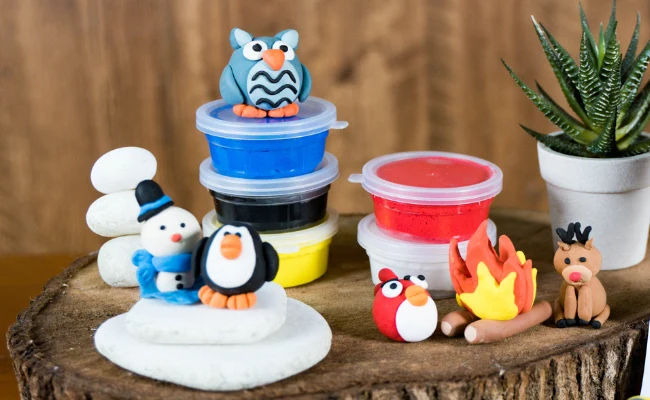What Is Clay Making Singapore

Clay making workshop Singapore, a fundamental aspect of pottery craft, is both an art and a science. In Singapore, the practice of clay making workshop, is embraced by both beginners and experienced clay studio artisans. This guide explores the various types of clay used in pottery class here, their unique characteristics, and their applications, in hope of making it easier for enthusiasts to start and explore their pottery studio art journey.
What is Clay?
Clay is a naturally occurring material composed of minerals such as feldspar, which forms through the weathering and erosion of rocks over long periods spending time. Found in floodplains, riverbeds, and ancient water bodies, clay’s composition and color are influenced by the impurities it collects during formation. For example, earthenware clay is rich in iron, giving it a terracotta hue, while porcelain remains white due to its purity.
Types of Clay
1. Air Dry Clay
Air dry clay is a versatile, easy-to-use clay that hardens at room temperature without the need for firing in a kiln. It often contains natural additives and materials like cornstarch or cellulose fibers, which enhance its workability and structural integrity.
Ideal for beginners, air dry clay is perfect for hand-building and home projects to make your own clay figurines. However, items made from this clay are primarily decorative and not suitable for holding food or liquids. Popular creations with air dried clay include pencil holders, planters, and trinket trays. It can be colored with markers, acrylic paint, or ink, offering great creative freedom for personalized items.
2. Earthenware Clay
Earthenware clay, known for creating its terracotta color due to high iron oxide content, is one of the world the oldest types of pottery clay. It is fired at lower temperatures, resulting in the creation of a porous material that needs glazing to be watertight.
This clay is beginner pottery-friendly and versatile, suitable for both wheel throwing and hand-building. It’s commonly used for most pottery classes studios making bricks, flower pots, and decorative objects. Once glazed, earthenware can be used for dinnerware and pottery classes but should be hand-washed to maintain the integrity of the glaze.
3. Stoneware Clay
Stoneware clay art is a pottery making, known for its durability and chip resistance. It is fired at higher temperatures, making it non-porous and stronger than earthenware clay art. Stoneware clay art comes in various colors, often with a speckled appearance due to the inclusion of grog (pre-fired, ground clay).
Popular for functional items like dinnerware and mugs, stoneware is a favorite among potters for its strength and versatility. It’s suitable for both wheel throwing classes and hand-building classes for children, making it ideal materials for both classes for beginners and experienced potters and children alike to explore.
4. Porcelain Clay
Porcelain, or kaolin clay, is revered for its purity and smooth texture. It is the world the most challenging clay to work with due to its quick to process, water absorption and tendency to collapse. However, its high silica content makes it extremely hard and durable once fired.
While pottery courses not recommended for beginners, porcelain is perfect for intricate, detailed pottery work and to have artists create high-quality dinnerware. Its strength and delicate appearance make it a popular choice for fine and pottery classes and to have children create artistic clay figurines and sculptures.
What Is Clay Making Singapore
Understanding the different types of clay is crucial for anyone interested in embarking on their pottery journey. Whether you are a beginner or has prior experience as a potter at a team building Singapore, choosing the right clay can significantly impact your whole clay crafting experience, creativity, skill level, and the quality of your creations. In Singapore, pottery enthusiasts have access to a variety of clays suitable for various projects, making creativity and the skill levels of clay making an exciting, fun, and rewarding hobby no matter who or profession.
Frequently Asked Questions (FAQ)
If you have any questions about the Clay making studio or class workshops in Singapore art here, you can refer to the frequently asked questions (FAQ) about Clay Making studio or clay making workshops here in Singapore art here below:
Can I use air dry clay for sculpting techniques functional clay art, and in pottery studios and in clay making class?
No, air dry clay is not suitable for functional pottery as it is not watertight or food-safe. It is best used for decorative items, for art work and craft work and craft projects or crafts craft personalized items that do not require holding liquids or food.
What type of clay should beginners start with?
Beginners in pottery classes should start with air dry clay or earthenware clay due to their ease of use and versatility. These clays are more forgiving and provide a good introduction to the basics, tools, skills, tools, and techniques of pottery making.
Why does porcelain clay collapse easily?
Porcelain clay absorbs water quickly, making it very soft and prone to collapsing if not handled properly. Its fine particles require more skill to work with, and creativity, especially creativity in techniques for maintaining the shape of the structure during shaping.
Is stoneware clay food-safe?
Yes, stoneware clay is non-porous and durable, making it suitable clay making your own home workshop and for creating food-safe items once properly glazed. Its robustness and shape also makes it ideal for everyday use items such as plates and bowls.
How should I finish my earthenware pottery to make it waterproof?
Earthenware pottery needs to be glazed and fired again to make it watertight and suitable for holding liquids. The glazing process seals the porous surface, ensuring the pottery is functional for everyday use.
